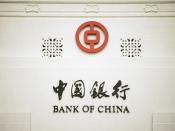"Banks are described as deposit taking and lending institutions. Describe the features of current and fixed-term retail and negotiable certificates of deposit and present evidence of their scale. But over the past 15 years the value of their retail deposits has trended downward. Present evidence of this trend. Banks have responded with three important innovations. They have introduced Internet-based deposit accounts (p. 52 of FSR, March 2006), increased their borrowing from overseas financial markets and off-loaded their funding of loans through securitisation. Describe and explain each of these three innovations. Present data from the references (where available) on the scale of these innovations."Innovations of bank fundinThere are variety of deposit taking and lending institutions, while banks are the most important institutions compared to others. The common features of deposits are usually the liquidity continuum, risk and return. In terms of these common features, there can be four types of deposits which are current deposits, saving deposits, term deposits and negotiable certificates of deposit.
Over the past decade retail deposits have declined dramatically, banks have responded with three important innovations including introducing internet-based deposit accounts, increasing borrowing from overseas financial markets and off-loaded the funding of loans through securitisation vehicle. In the following, it will talk about features of each deposit and search three innovations of bank funding in details.
Current deposits are funds that placed in an account which provides a cheque facility, which means the facility can be accessed through cheque accounts. Economists regarded current accounts as "transaction accounts" (Hunt&Terry, p75) which means cash are held by substitute, and thus they treated balances in this kind of accounts as a type of money. Term deposits are funds that placed in a certain account for an agreed period, which a fixed interest rate will be paid. But there is a...


